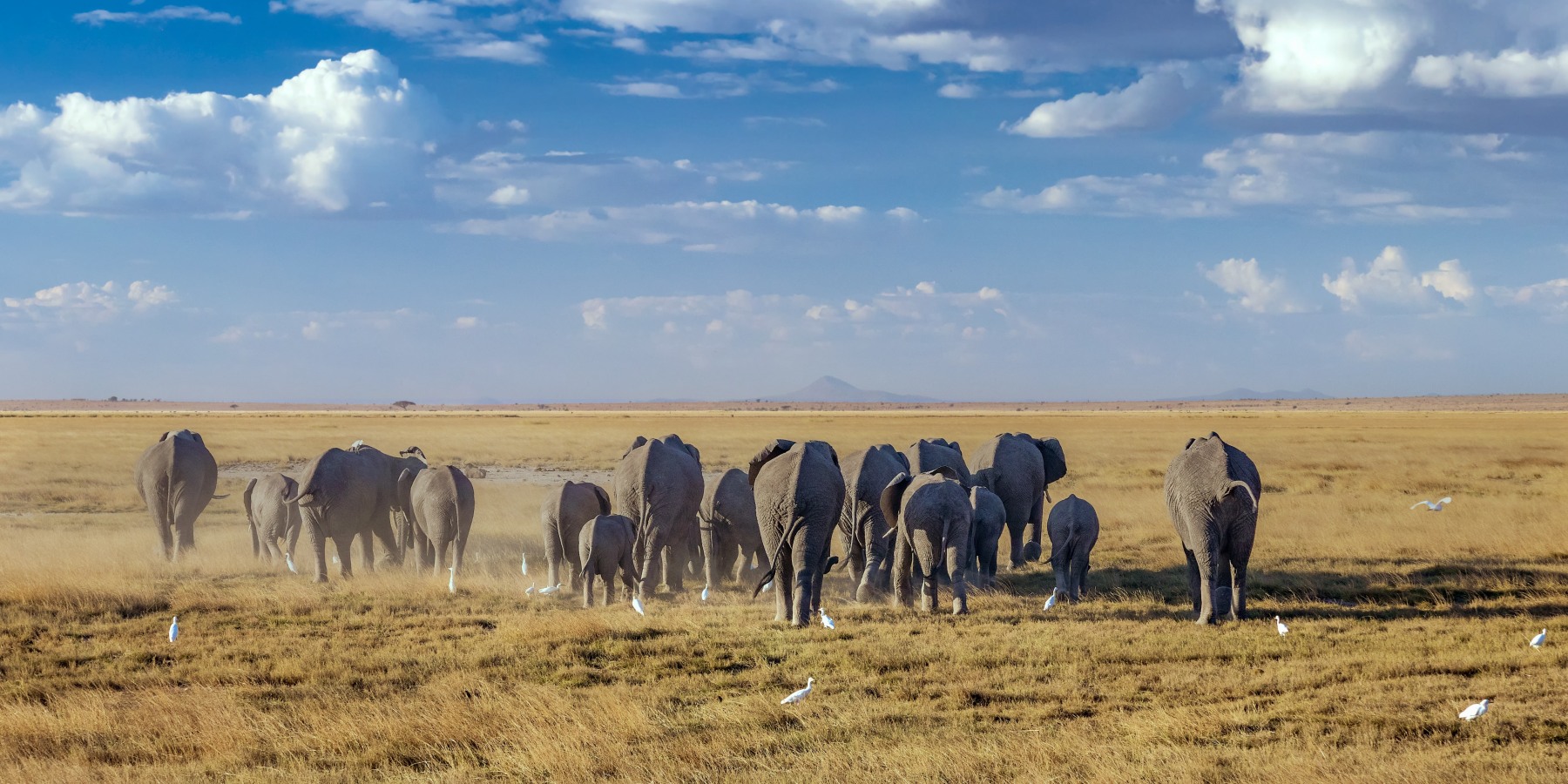
1. Masai Mara
From the Great Migration to up-close experiences with big African Cats. Every safari traveller must visit the Maasai Mara National Park. Go to the sky for a bird’s eye view of the vibrant African plains and its various populations. Join a thrilling vehicle safari to closely explore the area’s lions, elephants, and other animals. The conservancies and Masai Mara National Reserve never cease to enchant and excite.
Masai Mara is renowned for having the largest number of wild animals anywhere in the world. This region is home to over 40% of Africa’s largest mammals. In addition, the Masai Mara is more than just limitless plains, though. There are numerous Maasai settlements, several group ranches, and a dozen community conservancies nearby besides the main Masai Mara National Reserve.
The Masai Mara unfolds into the stage for the Great Migration, one of the most amazing animal events on earth, every year from July through October. Seeing so many different creatures scattered throughout the plains is nearly unbelievable. More than 1.5 million zebra, wildebeest, and antelopes migrate from the Serengeti to the Masai Mara in search of greener pastures and water. They find refuge in the undulating savannah’s sunburned grasses. Only in the Serengeti and the Masai Mara can you experience the Great Migration. Nothing else comes close to that.
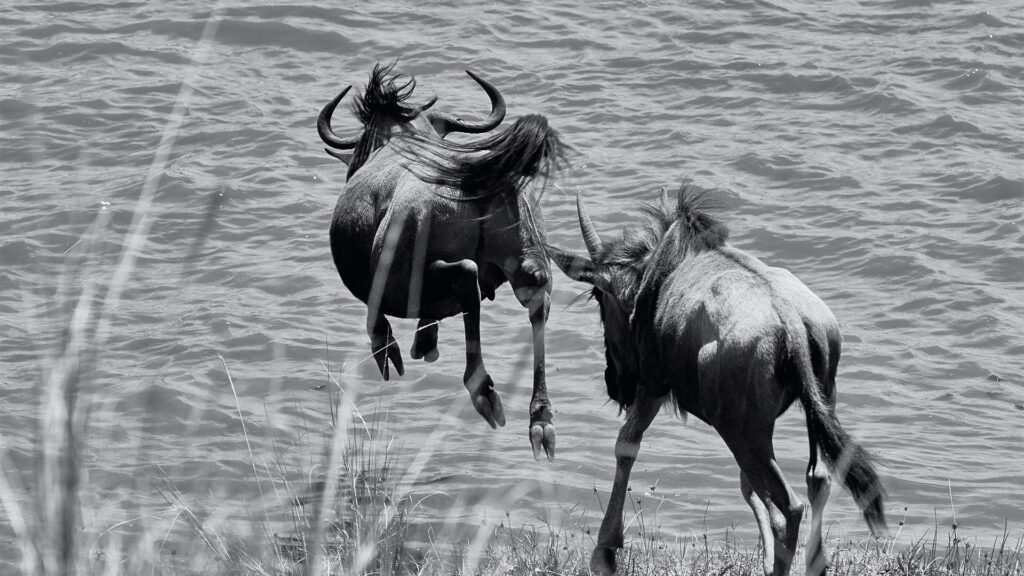
2. Amboseli National Park
After the Maasai Mara, Amboseli National Park is Kenya’s second most popular national park. It is located 260 kilometres (160 miles) outside of Nairobi. Amboseli is located in eastern Africa, northwest of Mount Kilimanjaro, on the Tanzania-Southern Kenya boundary. With Mount Kilimanjaro, Africa’s tallest peak, as its crowning glory, it is one of Kenya’s most visited parks. Amboseli is one of the largest still-existing national parks in Kenya and East Africa. The park is located in the Kajiado district. The park occupies an area of 39,206 hectares, at the centre of an ecosystem that stretches 8,000 km along the Kenya-Tanzania border.
According to the Kenya information guide, Amboseli is renowned for having a sizable herd of around 900 elephants. 58 families and about 300 adult male elephants live independently in Amboseli. It is regarded as the best location for viewing and filming elephants. It is said that Amboseli was the birthplace of “Echo.” Echo has been the subject of the most research worldwide and is the subject of several books, including Elephant Memories, Echo of the Elephants, and Portraits in the Wild by Cynthia Moss.
As you prepare to visit Kenya, include Amboseli National Park in your bucket list. Amboseli will provide an unforgettable experience and a sense of the African flair. The park houses the Masai tribe that inhabits the area close to the park, their culture, clothing, food, name it. This will make your trip exciting and memorable.
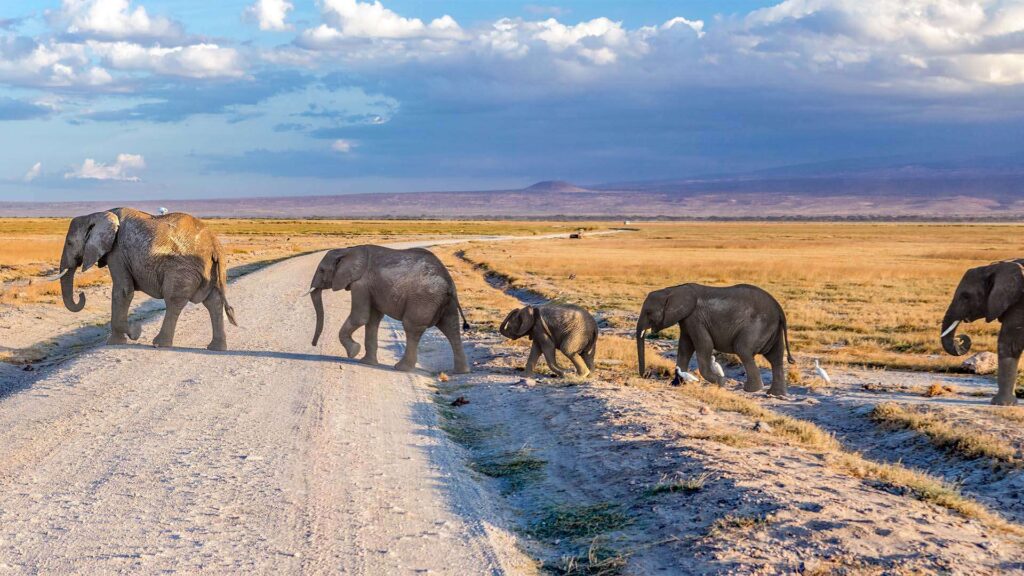
3. Tsavo National Park
One of the top tourist locations in Kenya is Tsavo National Park, which is situated in the country’s southwest. Tsavo is split into two parks, the Tsavo East and Tsavo West National Park. Tsavo is well-known for housing several Lions, which some time back were known as “Man-Eaters,” as well as other animals like sizable elephant herds.
Hills and forested grasslands can be found in Tsavo West National Park, which is part of the Tsavo National Park. Tsavo East National Park is characterised by semi-arid grasslands and savannah where several wildlife species are spotted. The man-eating lions of Tsavo National Park became popular when two maneless lions attacked construction workers while constructing the railway that runs through the park. Tourists are interested in seeing these lions while touring this national park and other sights in the destination.
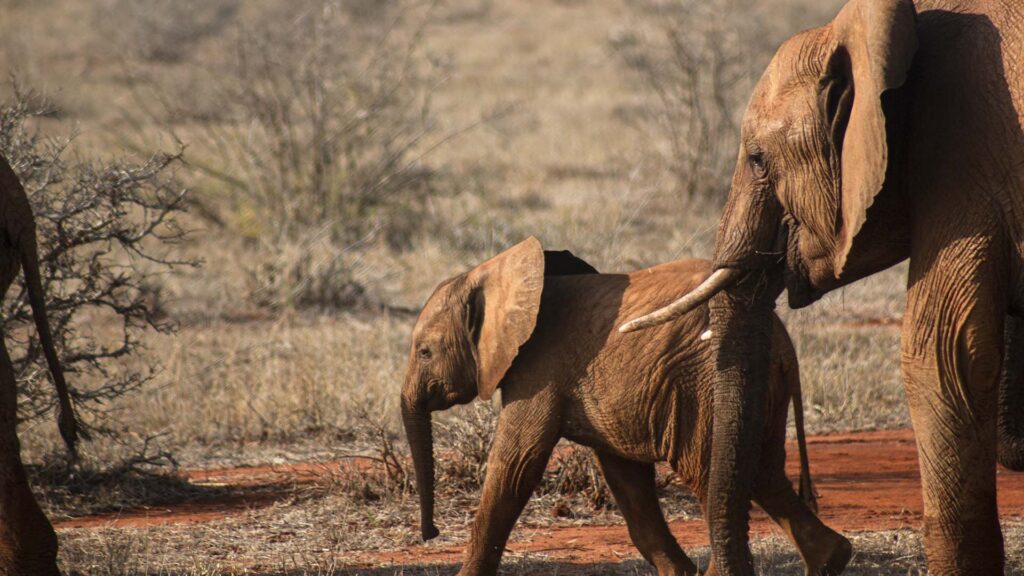
Lake Nakuru National Park has risen over the years to become one of Kenya’s most frequented parks. This is due to the park’s birdlife and other wonderful characteristics. Tourists can indulge in activities like camping and picnics on the stunning rocky vantage spots in the park, bird watching, and game viewing.
Due to the large number of birds residing here, Lake Nakuru Park is a haven for bird lovers. Almost 400 bird species can be found in the Lake Nakuru National Park, including flamingos on the lake and the savannah grasslands. African Fish Eagle, Slender-billed Greenbul, Long-tailed Widowbird, Rufous-throated Wryneck, Montane White-Eye, Red-capped Lark, Northern puff back, Rüppell’s Robin-chat, Shining Sunbird, and several other bird species are among the species.
Lake Nakuru is also a game attraction for animal enthusiasts and wildlife explorers. Almost 100 endangered rhinos, including black and white ones, live in Lake Nakuru Park. Moreover, the park has 50 or more animal species, including buffalos, waterbucks, lions, and impalas.
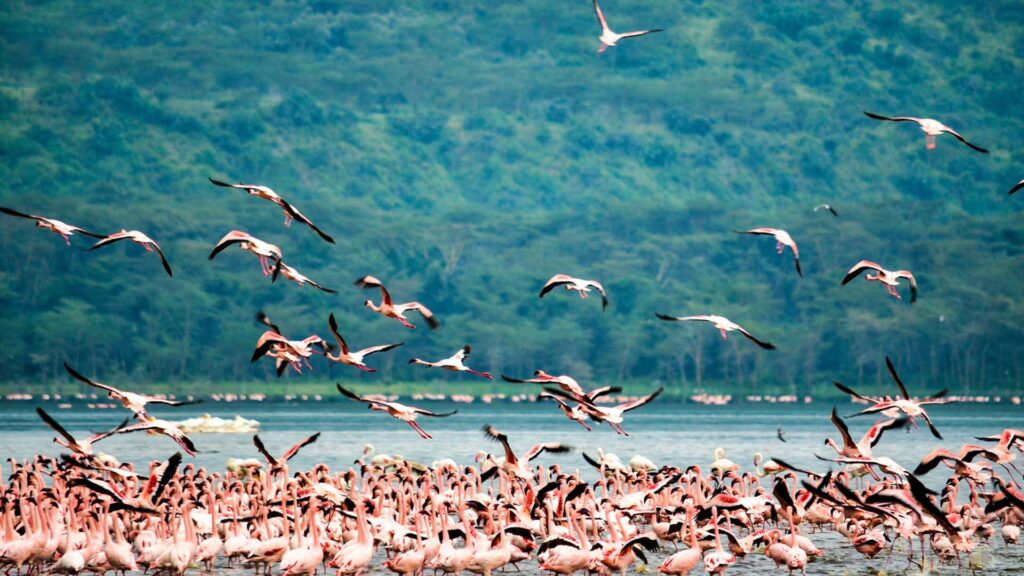
5. Mt Kenya National Park
Mount Kenya National Park was designated a UNESCO World Heritage Site in 1997. The park is home to the great, famous, world-renowned Sirmon route to Mount Kenya Summit. The park covers 715 square kilometres of land. The majority of the park stands above the contour line of 3,000 meters. The forest reserve is 705 square kilometres in size. Together, these factors make the UNESCO World Heritage Site a total extent of 1,420 square kilometres. In 1949, Mount Kenya National Park was established. This park was established with the goal of safeguarding the area around Mount Kenya. The region was named a UNESCO Biosphere Reserve in April 1978.
Climbing Mount Kenya via the Sirmon path can be a thrilling experience for mountaineers, nature lovers, daring adventurers, and those who enjoy climbing mountains for fun or team building.
The mountain has three peaks. Only the last of Mount Kenya’s three peaks—Point Lenana (4985m/16,354 ft), Batian (5199m/17,057 ft), and Nelion (5188m/17,021 ft)—can be reached by frequent tourists. The remaining higher summits are still only accessible to highly skilled mountaineers.
It can be difficult to climb at these altitudes; hence, climbers are advised to spend at least 3 nights acclimating to avoid altitude sickness.
The park’s abundant birds welcome you as you start your ascent at the mountain’s tropical base. Watch out for sunbirds, eagles, and other avian life as you go up through the moors and woodlands in this magnificent park.
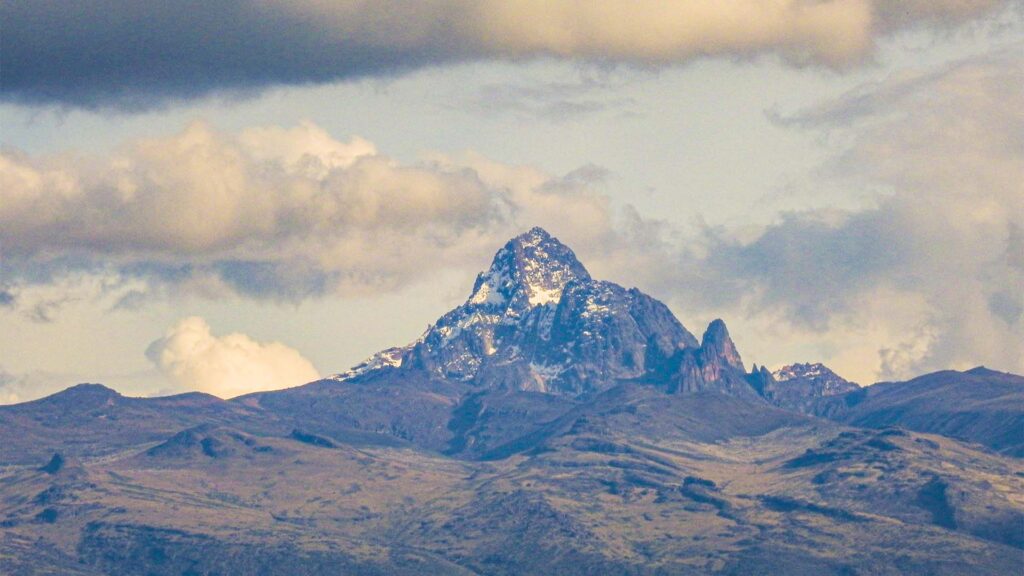
6. Nairobi National Park
“The only Wildlife Capital in the World”
The Nairobi National Park is only a short drive from Nairobi’s downtown. A diversity of wildlife, including the endangered black rhino, lions, leopards, cheetahs, hyenas, buffaloes, giraffes, and rich birdlife with over 400 species reported, can be seen amid wide-open grass plains with city skyscrapers in the background and scattered acacia thicket. Picnic areas, three campsites, and hiking paths are available for guests to enjoy.
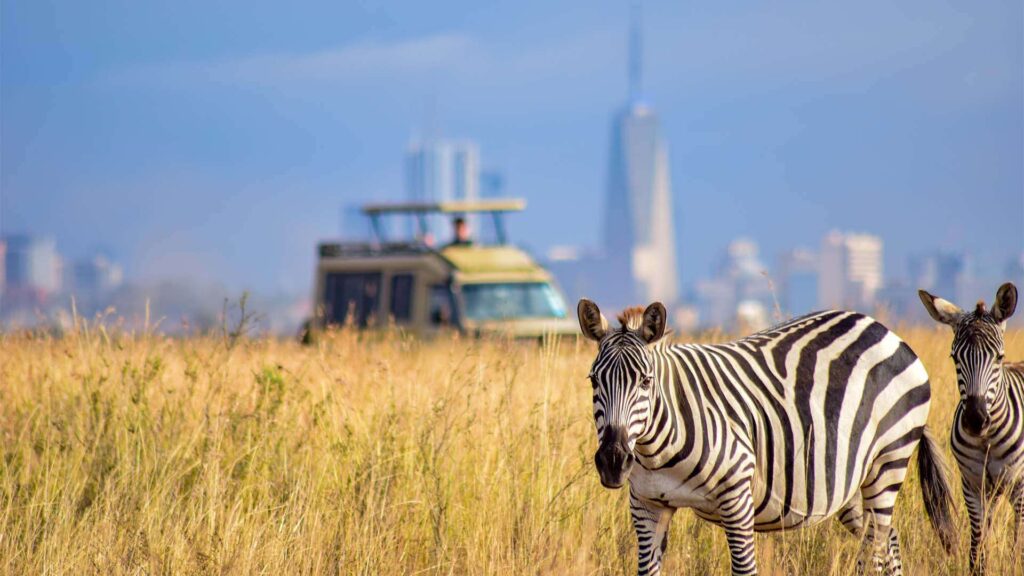
7. Samburu National Reserve
In the middle of dry and semi-arid environments, riverine forests and palm groves form the stunning panorama of the Samburu National Reserve. Famous fauna can be seen living in this wide area of distant, untouched wilderness, and a peaceful atmosphere permeates this wildlife paradise. This reserve, which lies in Laikipia, one of Kenya’s less travelled areas, delivers a true wilderness experience.
The largest river in northern Kenya, Ewaso Nyiro, may be found in this dry region, the Samburu people’s traditional homeland. The Samburu people were drawn to this region because of the dependability of the Ewaso Nyiro, which supplies water for their herds, quenching the thirst of the profusion of animals that roam this reserve. To the south, the river flows through Buffalo Springs National Reserve, Shaba National Reserve, and Samburu National Park.
This craggy, rugged area exposes a romantic, breathtaking safari experience. It is home to the rare northern special five species (Grevy zebra, Somali ostrich, reticulated giraffe, gerenuk, and the beisa oryx). Big cats lurk over the dense acacia woodland while captivating Samburu elephant herds stroll over this reserve’s abundance of game.
In this semiarid region of the nation, committed conservation efforts have long been a priority. Communities have worked in crucial collaboration to prevent conflicts between people and wildlife. Here, there are fantastic chances to talk to, work with, and learn from researchers, trackers, and organizations looking for endangered species.
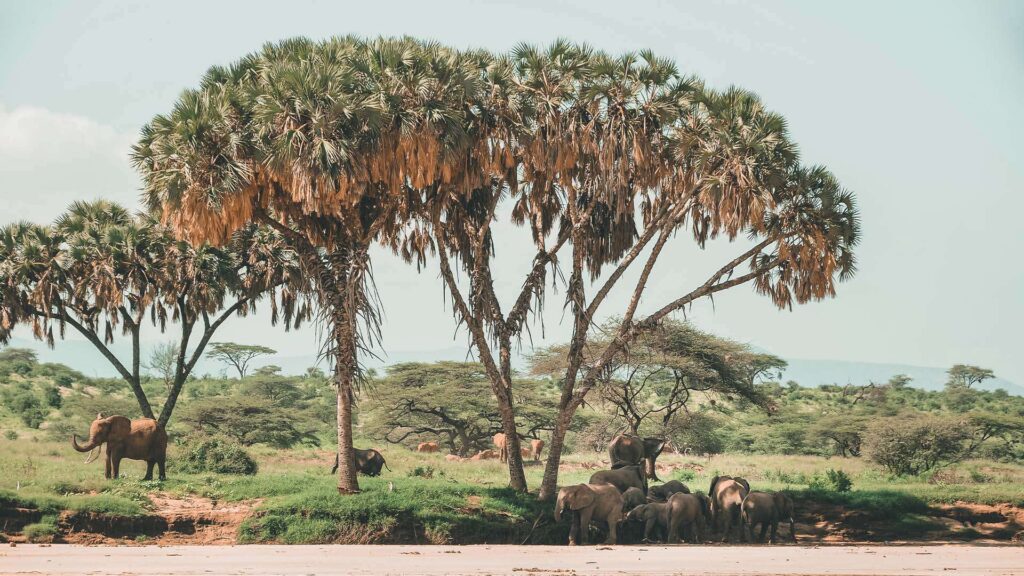
8. Watamu National Marine Park
Watamu National Marine Park is well-known worldwide for its natural beauty and is home to various marine life, including three kinds of sea turtles and visiting whale sharks and manta rays.
The Watamu National Marine Park is the oldest in East Africa, covering more than 229 km2. Immaculate white-sand beaches line up the Watamu National Marine Park, and lagoons are protected by coral reefs. Only the Great Barrier Reef itself has a bigger species list, and even then, only on a far larger scale, making it one of the best-kept secrets in the entire world!
Inside the main reef, it is practically difficult to snorkel without spotting a few dozen species; divers outside the fringe reef have a great opportunity to spot the majestic whale shark and Manta Rays, who are seasonal visitors. The ideal time to see these animals is around November. Three different species of sea turtles live in the park and lay their eggs on the beaches of Marine Park.
The Park and its coral gardens are one of the main reasons to visit Watamu.
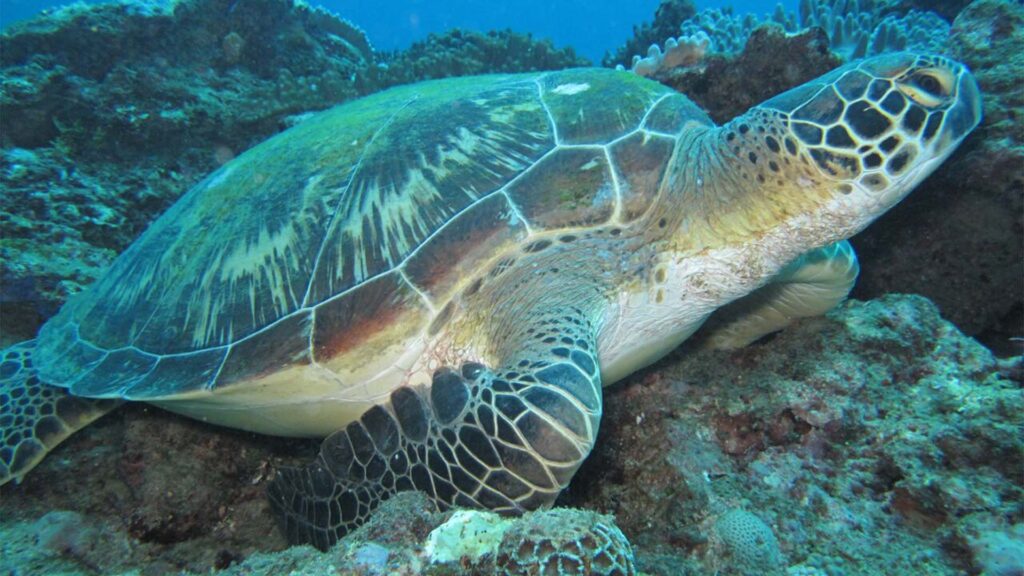
9. Meru National Park
“Infinite Wilderness”
The Meru and Kora sister parks are spectacular on a grand scale. They include lush jungles, raging rivers, verdant swamps, khaki grasslands, and skeletal termite cathedrals, all beneath the enormous blue bowl of the sky. Few sites can compare to the sparsely populated and completely unspoiled atmosphere found here. More than 427 recorded species of birds are available for viewing, along with Grevy’s zebras, elephants, Bohor reedbucks, hartebeests, pythons, puff adders, cobras, and buffalo.
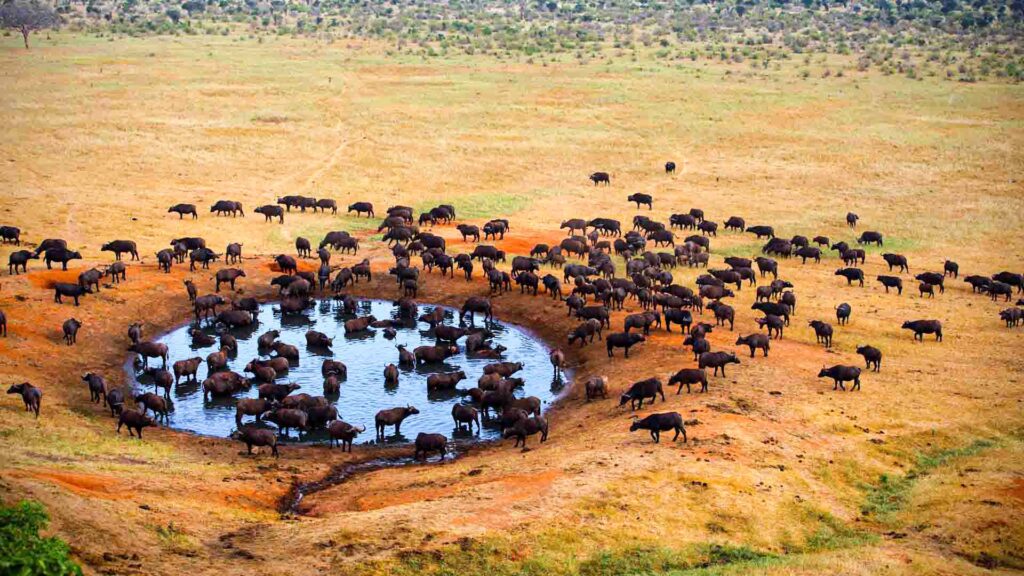
10. Hell’s Gate National Park
Just northwest of Nairobi, in the southern region of Kenya, is where you’ll find Hell’s Gate National Park. 26.35 square miles make up the national park (68.25 sq km). The sibling Lake Nakuru National Park shares a border with Hell’s Gate.
The park is 6,200 feet (1,900 m) above sea level and is only 56 miles (90 km) from Nairobi. The name Hell's gate is derived from the primary feature, Hell’s Gate Gorge. Fischer’s and Central Tower are volcanic rock structures that may be seen on the red-walled cliffs that line the gorge.
From Central Tower, a minor gorge leads to a location with hot springs. Burns might result from the hot springs. Olkaria and Hobley are two extinct volcanoes inside the park’s limits.
Hell’s Gate is a well-known national park in Kenya due to its accessibility from Nairobi, as well as the variety of species and breathtaking scenery that can be seen there.

